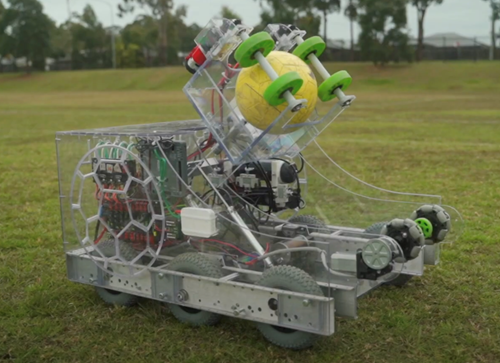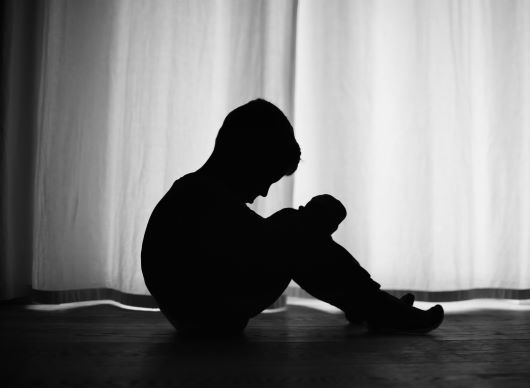Seven of Australia’s brightest young minds will take part in an international science and engineering fair, showcasing their research and inventions and competing against more than 1,900 students across 80 countries, regions and territories, for $US5 million in prizes.
Australia’s representatives at the 2021 Regeneron International Science and Engineering Fair (ISEF), were selected through the BHP Foundation Science and Engineering Awards, a partnership with Australia’s national science agency, CSIRO, and Australian Science Teachers Association (ASTA).
In 2020, students from every state and territory were honoured in the Awards. Students were nominated by their state or territory science teachers’ association and completed a virtual camp with CSIRO ahead of presentations to select finalists to represent Australia at ISEF.
Director of CSIRO Education & Outreach, Susan Burchill, said it was a once in a lifetime opportunity for the students involved.
“From a robotic soccer trainer, to ways to improve waste management in third world countries, and a giraffe walker to help the elderly navigate uneven surfaces, these students represent some of Australia’s best and brightest STEM talent,” Ms Burchill said.
“I’m proud that we are able to showcase our emerging Australian scientists and engineers at this prestigious international event. STEM education is critically important to our future economic prosperity and if these students are an indication, our future looks very bright indeed!”
Glenunga International High School student Raihanah Pranggono said that being involved in the BHP Foundation Science and Engineering Awards and attending ISEF was the highlight of her STEM journey so far.
“I feel very honoured to be a part of the delegation representing Australia at this year’s ISEF. Science has always been my favourite subject, and its all-encompassing applications in the real world fascinate me greatly,” Raihanah said.
“This experience has given me a glimpse into the international STEM network and the importance of collaboration and peer feedback between academicians, industry professionals and students globally, in order to address significant challenges through cutting-edge engineering and scientific innovation.”
Australia’s representatives are:
Engineering
- Hannah Jones, St Columba Anglican School, Port Macquarie (NSW)
- Rebecca Paratz, Labrats Science Club, Clayton (VIC)
Investigations
- Caitlin Marr, St Mary’s College, Hobart (TAS)
- Emily Walter, St Mary’s College, Hobart (TAS)
- Hadia Bizhan, Lyneham High School, Canberra (ACT)
- Maja Dalby-Ball Olson, Barrenjoey High School, Avalon (NSW)
- Raihanah Pranggono, Glenunga International High School, Adelaide (SA)
The event will be held virtually from 16 – 21 May 2021. It will allow participants to showcase their science, receive career advice, and network with their peers, academics and industry professionals.
To keep up to date with ISEF and view the Finalist Exhibit Hall, please visit https://www.societyforscience.org/isef
A full list of teacher and student finalists can be found on www.scienceawards.org.au
ISEF Finalists
Hannah Jones
Engineering | St Columba Anglican School, NSW
RoboBall
As an avid soccer player, Hannah learned that regional elite soccer players are often disadvantaged by a lack of training facilities or partners. So, she designed a robotic soccer trainer – that uses visual imaging software, pneumatics and electronics – which can retrieve balls, deliver balls to different heights and provide simulated passing practice. For her project, Hannah has received a nomination for the SHAPE NSW HSC Technology Showcase and won first place in the AIP Most Outstanding Physics Award. Her goal is a career in genetic engineering.
Rebecca Paratz
Engineering | Labrats Science Club, VIC
The Giraffe Walker
Rebecca’s Giraffe Walker addresses the risks of falls in the elderly by maintaining a stable level base for the user and helping them to sit and stand independently. She had to learn new skills and refine old ones such as coding, welding, soldering, riveting, and electronic design and construction. Rebecca’s favourite subject is mathematics, and outside of school she is a national-level gymnast, sportswoman and musician. Her ambition is to be a bio-medical engineer and to continue to create marketable and helpful medical devices.
Caitlin Marr
Investigations | St Mary’s College, TAS
Willow weeds
Together with her project partner, Emily Walter, Caitlin’s project sought to investigate the impacts of the introduced Salix fragilis (willow tree) on riverine health and water quality. She particularly enjoyed the experiments and their application to the wider environment. Caitlin’s favourite subjects are science and mathematics due to the investigation and problem solving involved. Her study goals include a science degree and PhD as a foundation to become an astrophysicist. Caitlin would love her future work to combat the effects of climate change and the enhanced greenhouse effect.
Emily Walter
Investigations | St Mary’s College, TAS
Willow weeds
Together with her project partner, Caitlin Marr, Emily’s project sought to investigate the impacts of the introduced Salix fragilis (willow tree) on riverine health and water quality. Emily was particularly concerned about the willow tree’s effects on aquatic life. Her favourite parts of the project were communicating with councils and NRM and creating a project video. Emily’s favourite subject is Science as it provides ‘the logic and sense needed in today’s chaotic world’. She will begin an International Baccalaureate Diploma program next year as a step to university.
Hadia Bizhan
Investigations | Lyneham High School, ACT
Studying soil types in landfills
Hadia’s project motivation arose from her dedication to helping improve people’s lives after witnessing first-hand the lack of waste management in developing countries due to a lack of funds. Hadia’s project focused on how varying pH levels of soil affect the rate of decomposition of biodegradable materials, and how waste management can be better facilitated through increasing the decomposition rate in landfills. The flow-on effects would be nutrient-rich soil for gardening and agriculture, elimination of methane gases and thus reducing of the greenhouse effect. Hadia is an avid cyclist, reader and baker!
Maja Dalby-Ball Olson
Investigations | Barrenjoey High School, NSW
Flora flammability
Maja’s project was developed to find a way to retain biodiversity in urban areas while fulfilling the need to protect life and built assets. This was achieved through studying the variation in flammability of native flora in the Sydney sandstone vegetation community, to better manage the interface between residential areas and bushland and to retain native species within urban areas. Maja volunteers in the SES and in her local surf lifesaving club and Youth Advisory Council. She aspires to complete either a Bachelor of Paramedics or surgical studies.
Raihanah Pranggono
Investigations | Glenunga International High School, SA
Reinventing bread
Raihanah’s project was a scientific investigation into the effects of different types of sugar on yeast so she could invent her own recipe for home-made bread. Raihanah’s favourite subjects are chemistry and biology. She aspires to be a biochemical scientist and/or neuro- or cardiothoracic surgeon and to give back to the community. She is continuing to develop her experimental and research skills as well as artistic and martials arts pursuits like acting, playing the piano and Taekwondo. This year Raihanah was recognised in the SASTA Oliphant Young Scientist Awards.
Images









